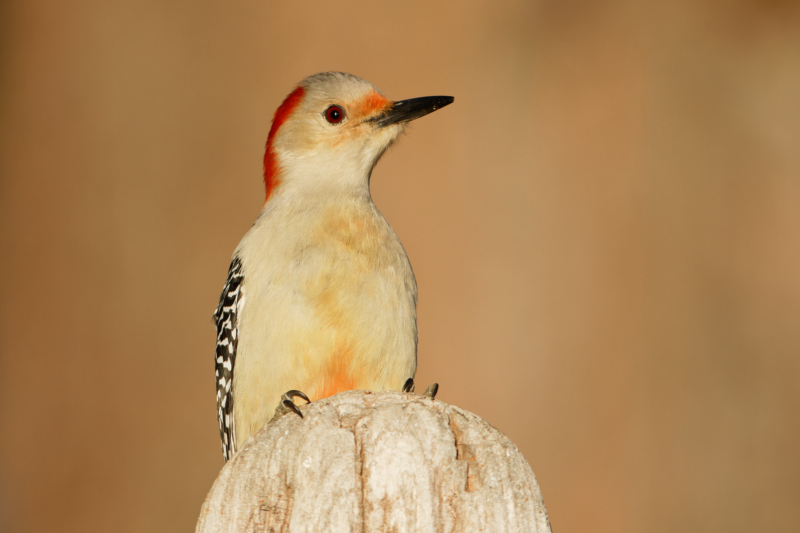I was thrilled to have a Red-bellied Woodpecker stop by my backyard bird feeder in Arkansas recently. This brightly colored woodpecker stood out against the driftwood perch I had set up near my feeder.

I’m an avid wildlife photographer and I love trying to capture unique bird species near my home. I had collected some nice pieces of driftwood from the banks of the Arkansas River and thought they would make great natural perches to attract birds. The morning this Red-bellied Woodpecker landed on my driftwood perch, I was ready with my camera set up on a tripod.
The Red-bellied Woodpecker is a fairly common sight here in Arkansas, but I never get tired of seeing their vibrant red cap and nape feathers. True to their name, these woodpeckers also sport a patch of reddish belly feathers, although these are often hard to see when they’re digging for insects on tree trunks.
This particular woodpecker seemed right at home, hitching up and down the driftwood and occasionally flitting out to snatch an insect from the air. According to my research, Red-bellied Woodpeckers prefer forests and woodlands near open habitats which provides them with plenty of snags and dead limbs to probe for insects.
Although common, I learned some interesting facts about my backyard visitor. Red-bellied Woodpeckers create nests by excavating cavity holes in dead trees. The male and female share parenting duties including incubating eggs and feeding nestlings. And while they eat mainly insects like beetle larvae from dead and dying trees, they will also snack on acorns, berries and sometimes even frogs and fish!
I feel lucky to have wooded areas near my home where beautiful birds like the Red-bellied Woodpecker can thrive. I certainly enjoyed watching this one make himself comfortable in my makeshift backyard bird habitat. With any luck, maybe he’ll bring his mate back to check out the birdhouse I set up too!
I’m looking forward to seeing what other colorful birds visit my yard this season. Be sure to check back here for more backyard birding adventures!
Gear:
- Camera: Canon EOS 7D
- Lens: Canon EF 500 mm f/4L IS
- Tripod: Gitzo Carbon Fiber with Wimberley Gimble Head
Technical:
- Location: My Backyard (Arkansas)
- Date & Time Taken: December 29, 2011 (08:12 A.M.)
- Aperture Priority
- Aperture: f4.5
- Shutter speed: 1/1600 sec. (as determined by the camera)
- ISO: 320
- Exposure Compensation: 0
- Focal Length: 500 mm
